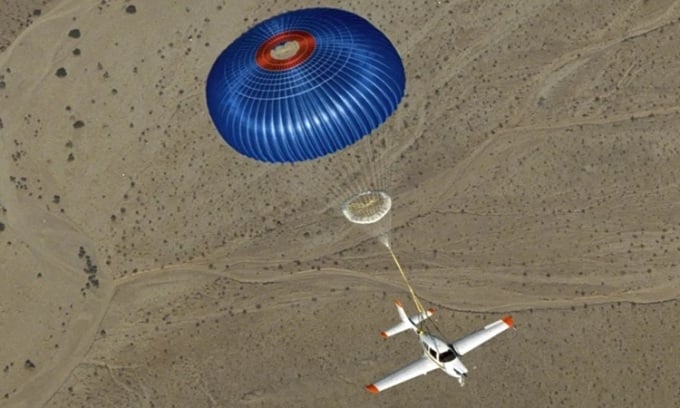Since its inception, the Cirrus Airframe parachute system has helped save 249 lives on planes that experienced engine failure or unexpected incidents.

The Cirrus Airframe parachute system helps the plane descend to a balanced altitude and land safely. Photo: Smithsonian Magazine
The Cirrus Airframe Parachute System (CAPS) from the American company Cirrus Aircraft has helped change the way small aircraft travel, according to Simple Flying . The idea of using a parachute for an entire plane has existed since the early days of aviation, with many design attempts, although none have proven practical or effective.
In March 2023, CAPS saved the lives of six people on board a Cirrus SR22, including a 3-year-old child and an infant, in a fatal accident. Shortly after takeoff from Pampulha Airport in Brazil, the plane suffered engine failure. Realizing that it did not have enough glide range to return to the airport, the pilot decided to deploy CAPS. As a result, the SR22 parachuted into the air and landed safely with no injuries to passengers.
In 1982, Ballistic Recovery Systems (BRS) made a breakthrough when it began manufacturing parachutes for ultralight aircraft. According to Cirrus Aircraft, a major milestone came in 1993 when BRS developed a specialized parachute system for the Cessna 150/152. However, this extended system was expensive, heavy, and took up a lot of luggage space. The result of a collaboration between Cirrus Aircraft and BRS in the 1990s, CAPS was a game-changer in safety. CAPS is an integrated safety net designed to be deployed in emergency situations where traditional methods may not be appropriate.
The CAPS parachute system covers the entire airframe and is used on light aircraft such as the SR20, SR22, and Vision SF50. CAPS was certified by the US Federal Aviation Administration (FAA) in October 1998. To date, it remains the first and only ballistic parachute used as standard equipment on aircraft.
When experiencing engine failure or facing unexpected challenges during flight, pilots can deploy the parachute system simply by pulling a joystick in the cockpit. This action triggers the parachute rocket to deploy in mid-air, pulling the entire plane along. The parachute system deploys in a controlled manner, ensuring that the plane descends with its wings leveled, eventually landing safely on the ground or water. This safety feature has attracted much attention for its ability to reduce the severity of emergencies. According to the New York Post, CAPS has saved 249 lives.
An Khang (According to Simple Flying )
Source link




























![[Photo] National Assembly Chairman Tran Thanh Man visits Vietnamese Heroic Mother Ta Thi Tran](https://vphoto.vietnam.vn/thumb/1200x675/vietnam/resource/IMAGE/2025/7/20/765c0bd057dd44ad83ab89fe0255b783)





































































Comment (0)